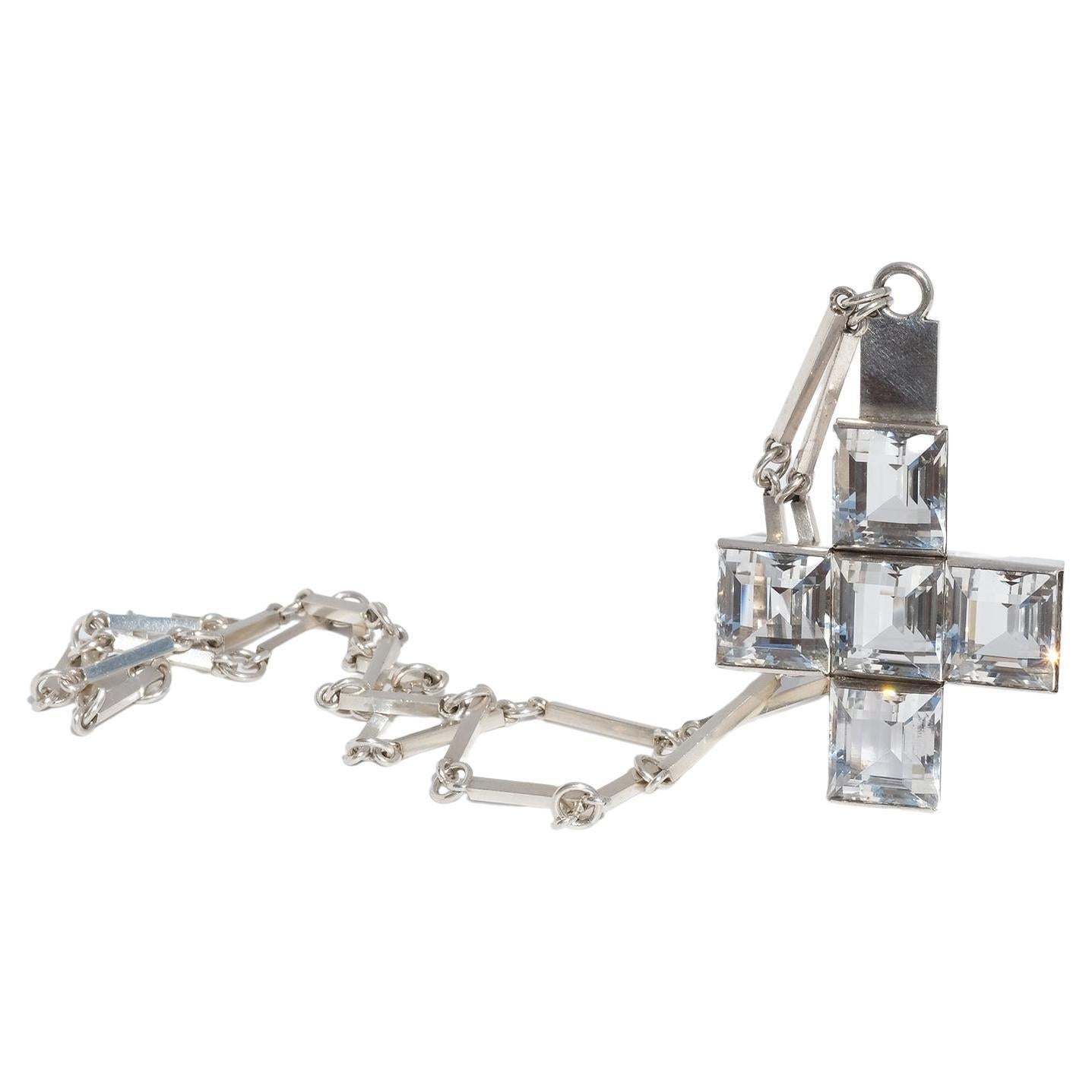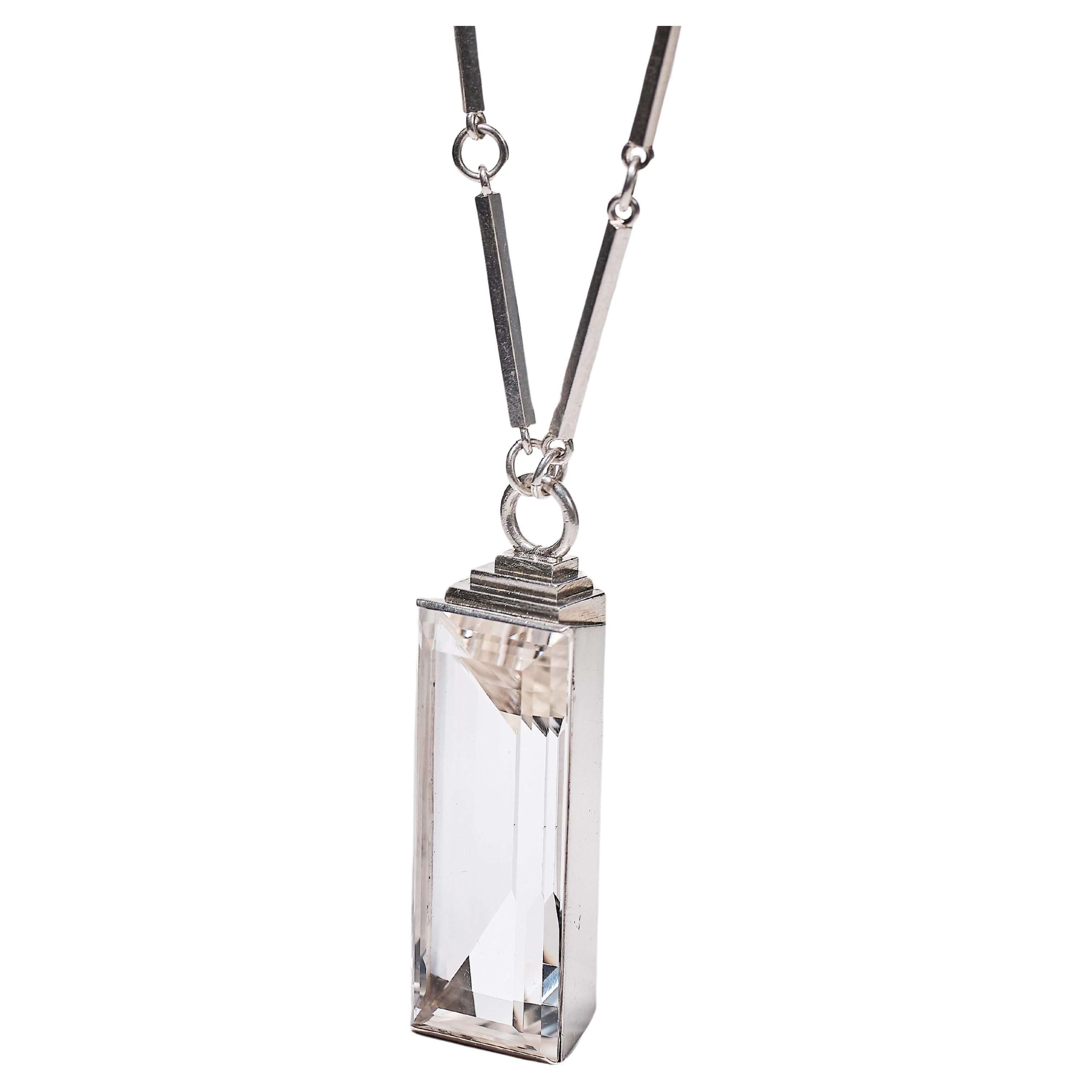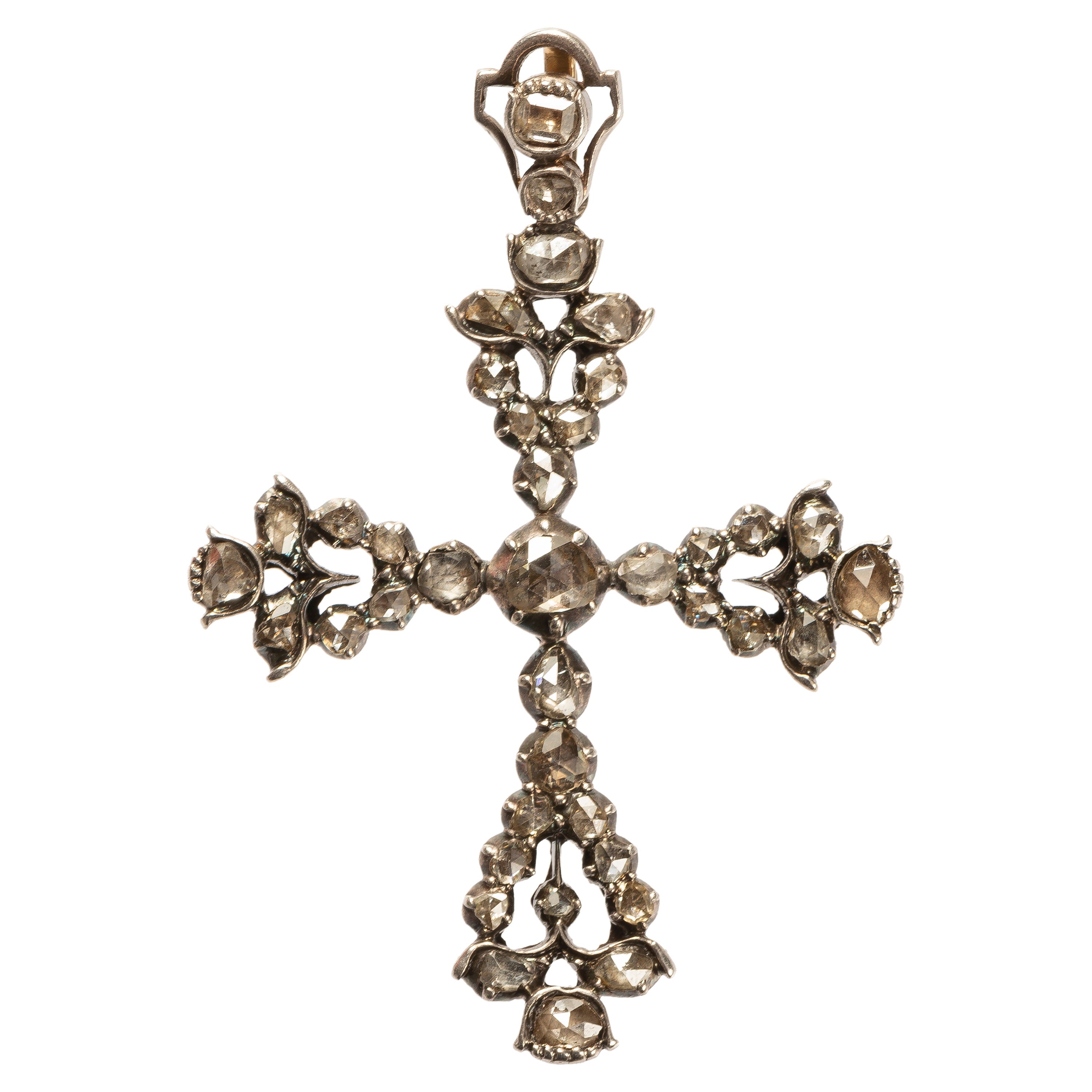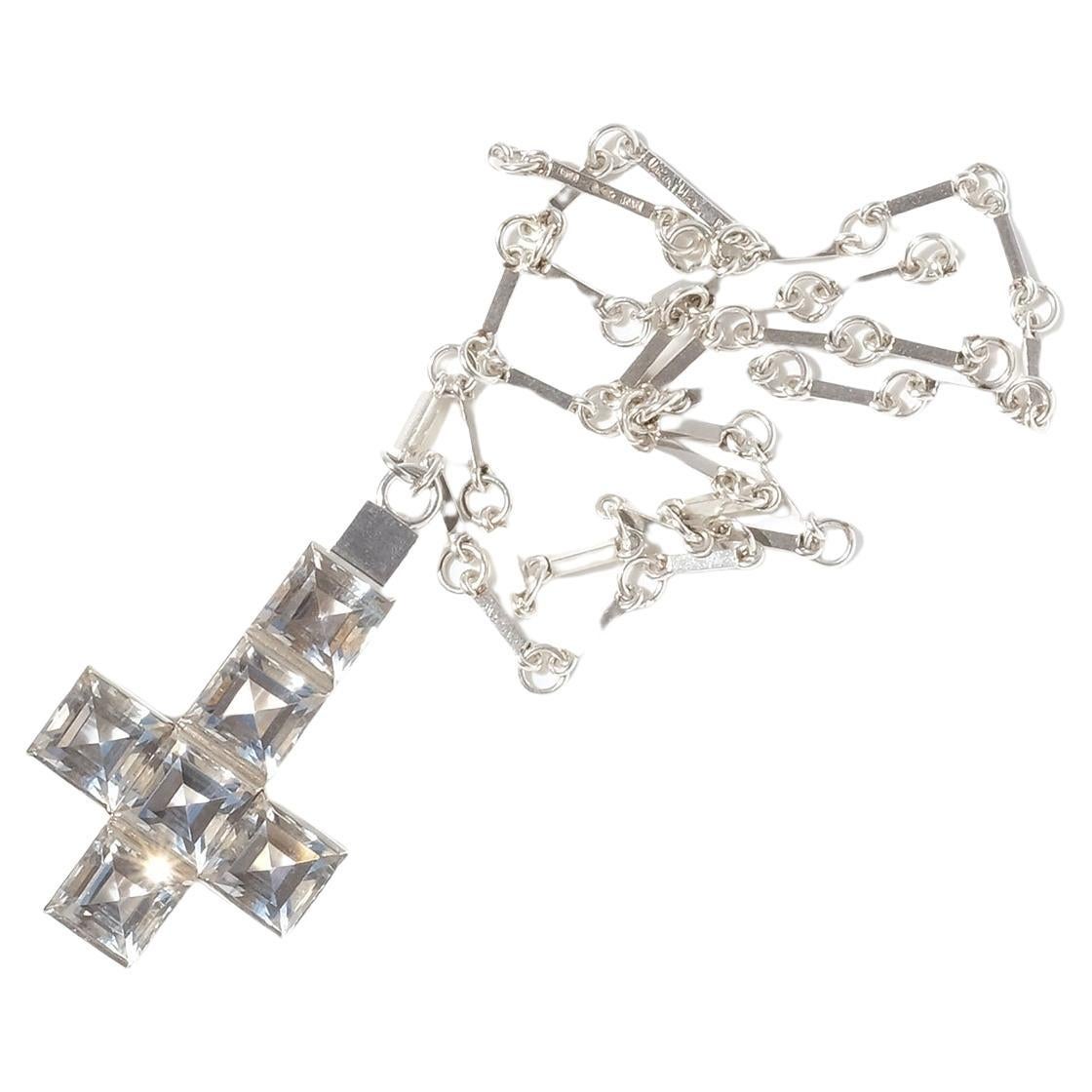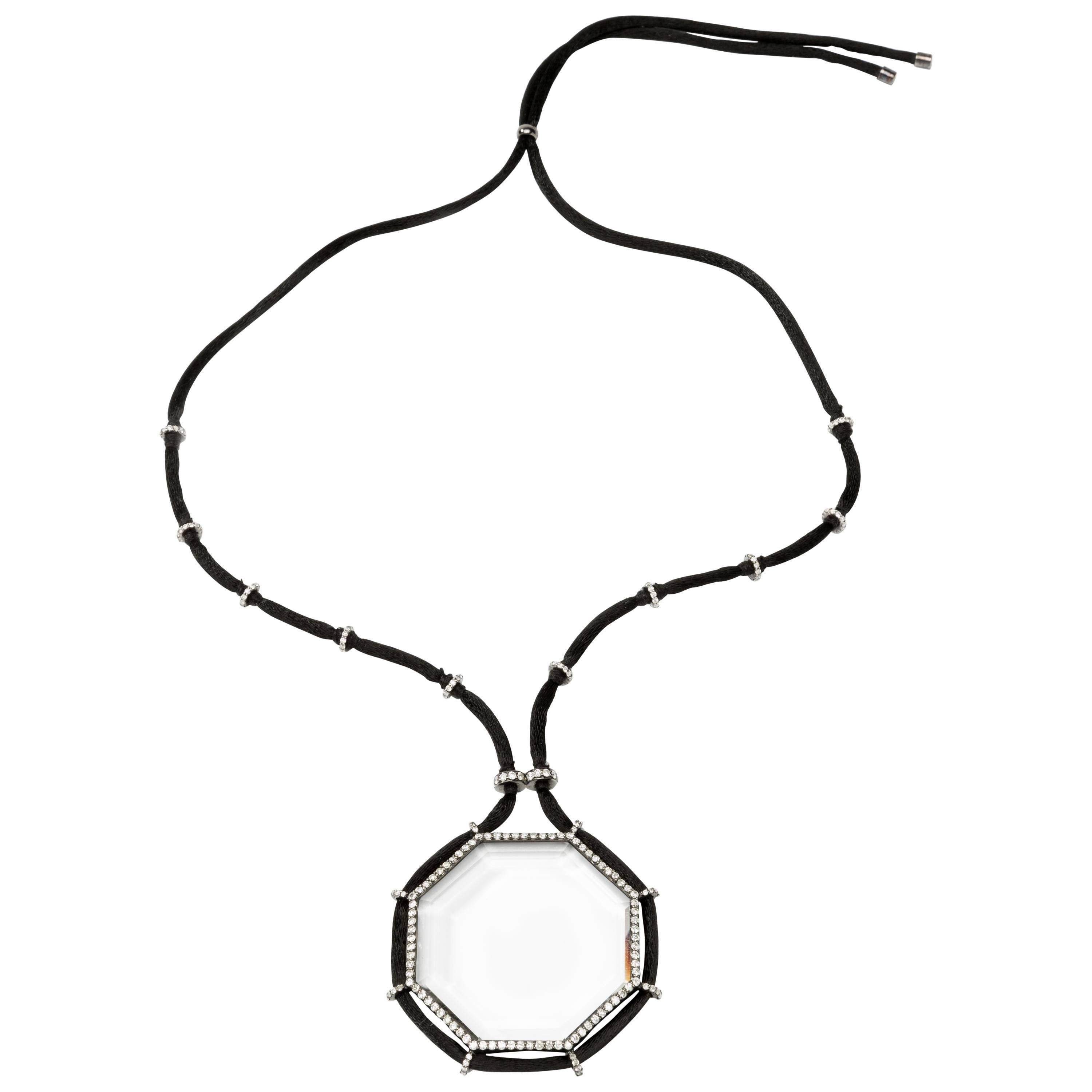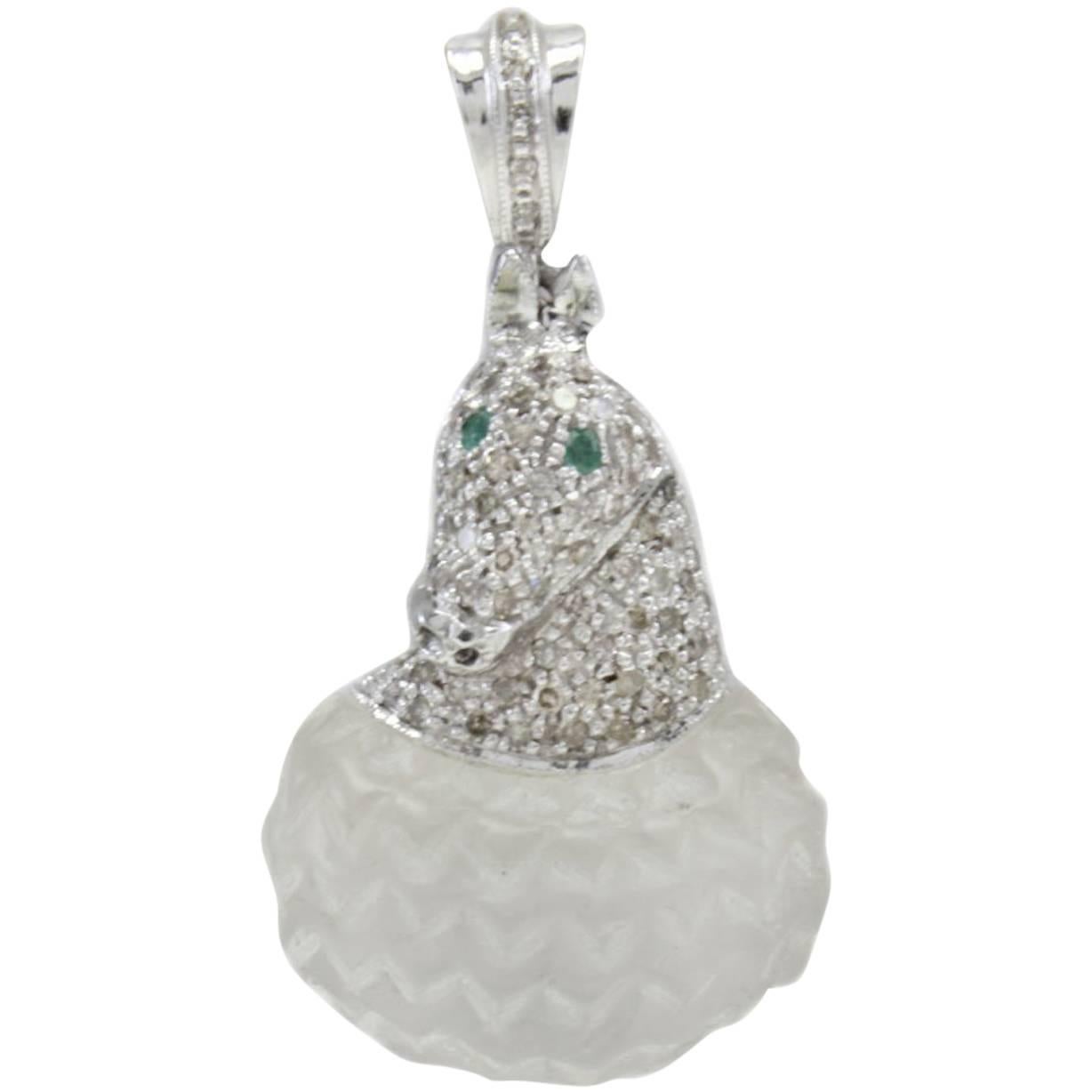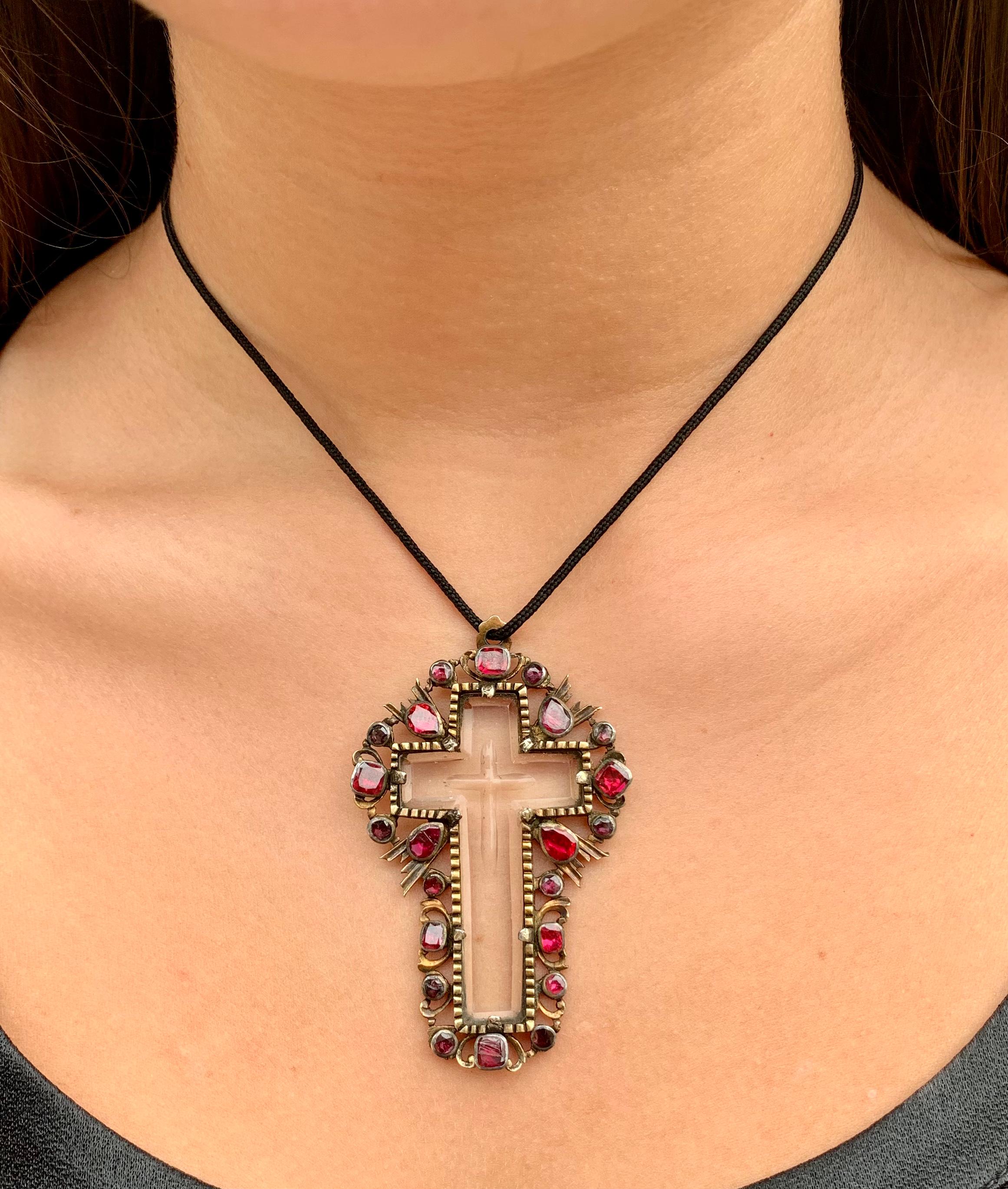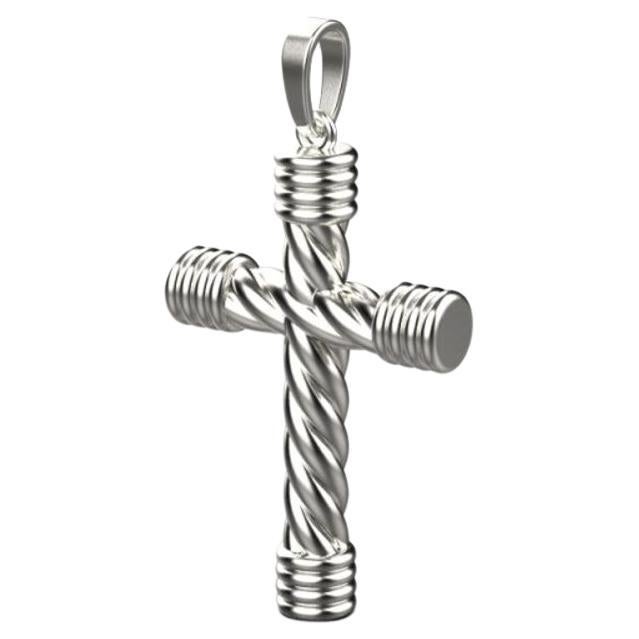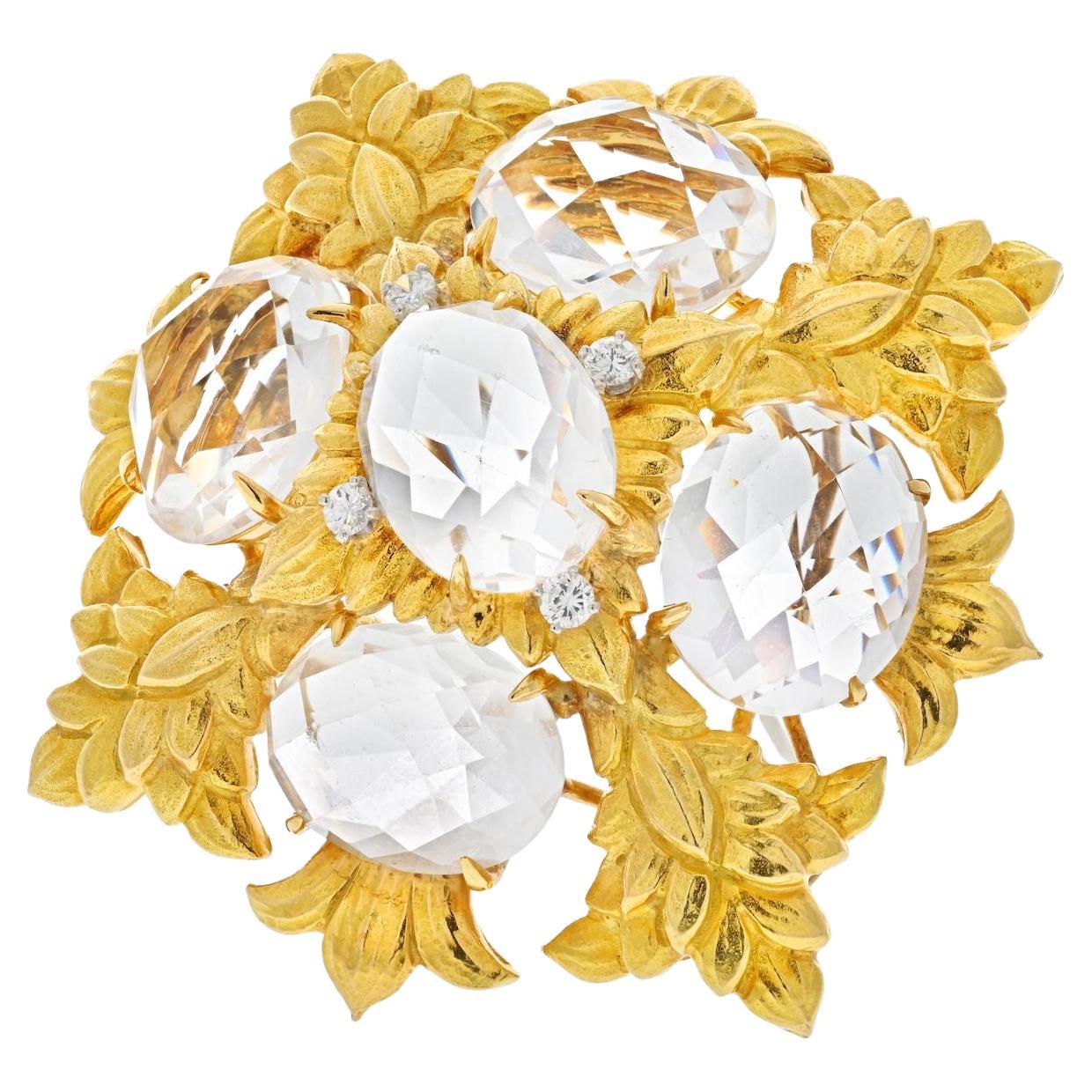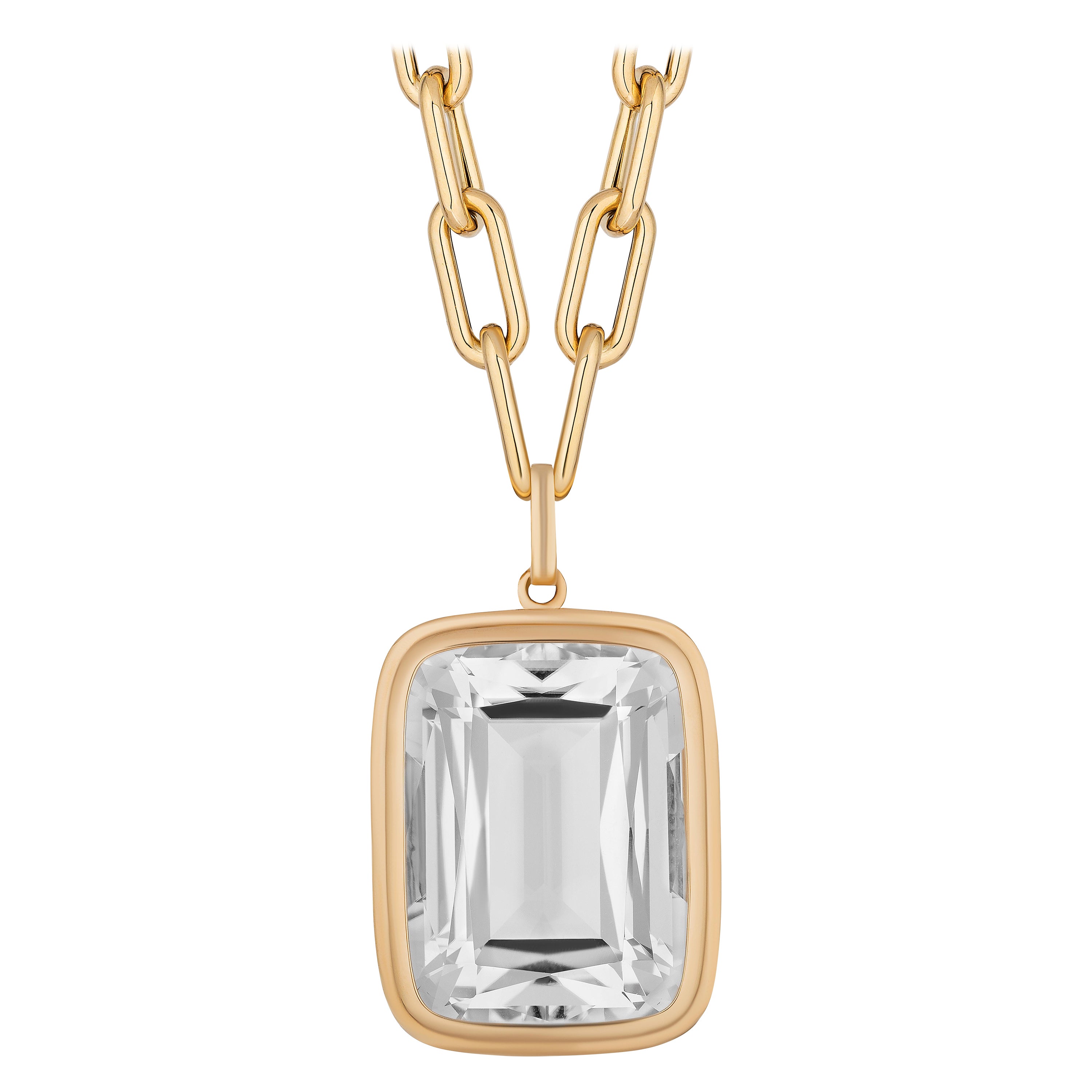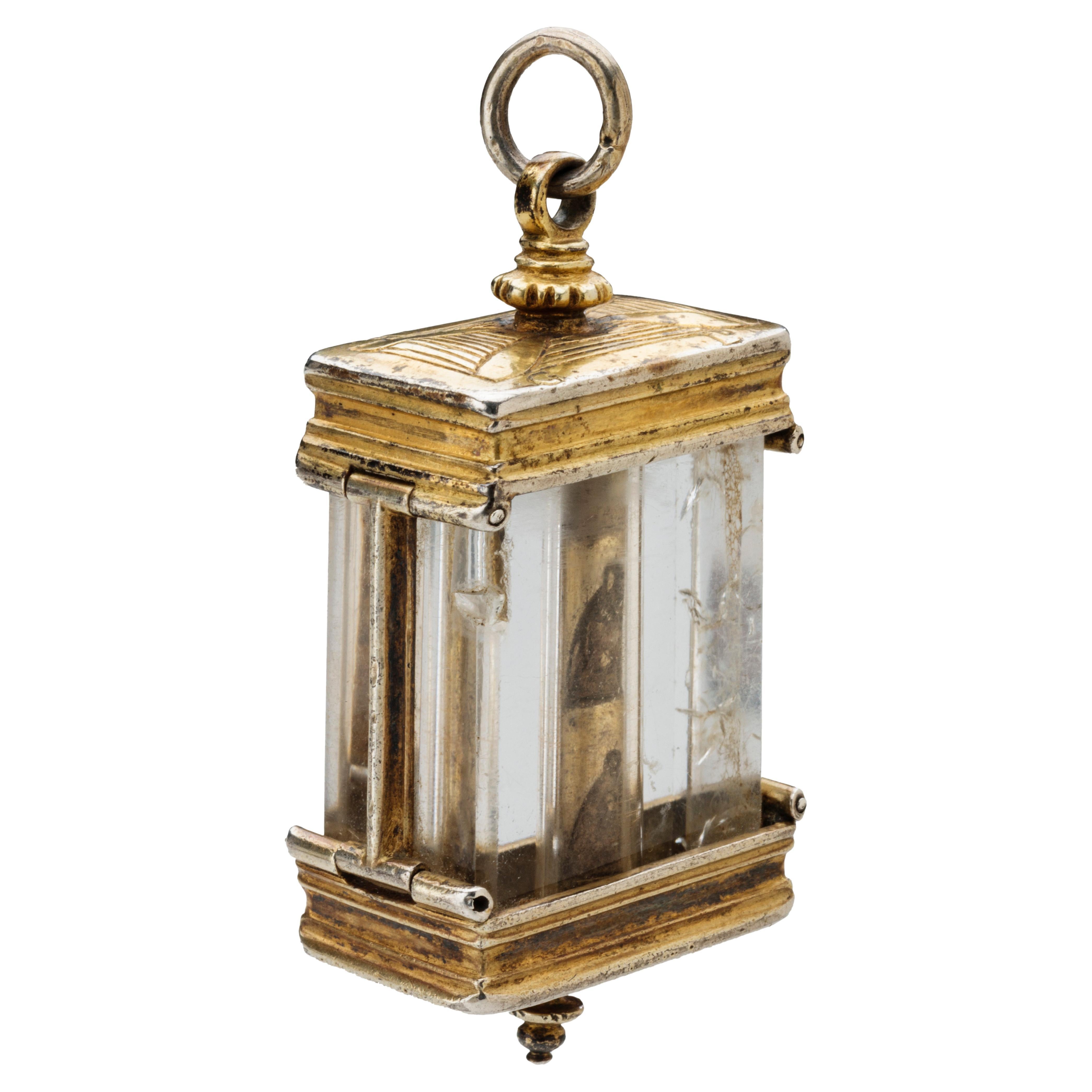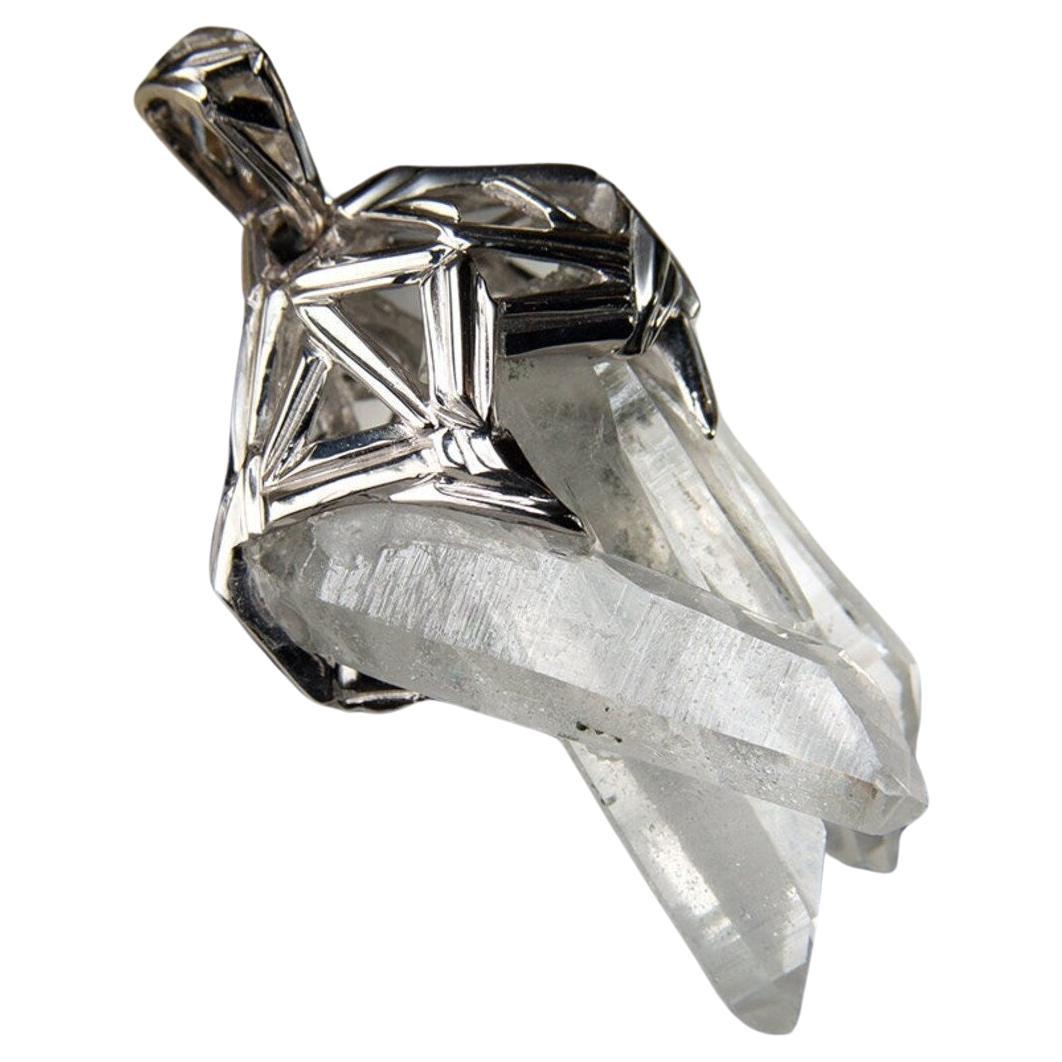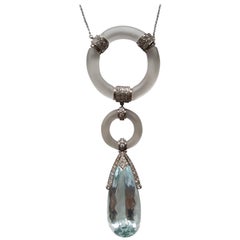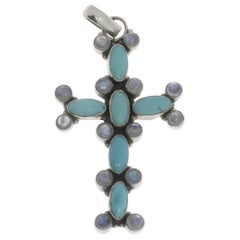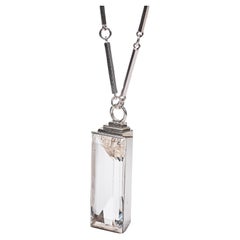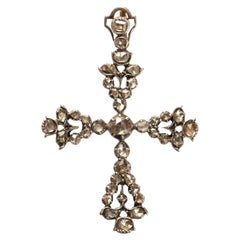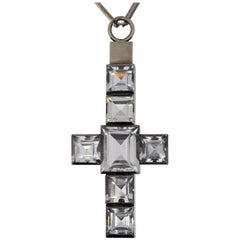
Wiwen Nilsson Rock Crystal Silver Cross Pendant
View Similar Items
Want more images or videos?
Request additional images or videos from the seller
1 of 6
Wiwen Nilsson Rock Crystal Silver Cross Pendant
About the Item
- Creator:
- Metal:
- Stone:
- Weight:70.09 g
- Dimensions:Height: 0.47 in (11.94 mm)Width: 1.54 in (39.12 mm)Length: 3.35 in (85.09 mm)
- Place of Origin:
- Period:
- Date of Manufacture:1940's
- Condition:
- Seller Location:Berlin, DE
- Reference Number:1stDibs: LU4401621173
About the Seller
4.7
Vetted Seller
These experienced sellers undergo a comprehensive evaluation by our team of in-house experts.
Established in 1981
1stDibs seller since 2013
118 sales on 1stDibs
Typical response time: 1 to 2 days
More From This SellerView All
- 1920s Rock Crystal Diamonds Silver Pendant NecklaceLocated in Berlin, DEAn exceptional piece of jewelry. Rock crystal plaque, octagonal shaped surrounded by brilliant-cut diamonds. On a black cord, accented by 12 rings of brilliant...Category
Early 20th Century Pendant Necklaces
MaterialsDiamond, Rock Crystal, Silver
- Aquamarine Diamond and Rock Crystal Pendant with ChainLocated in Berlin, DEA real eye-catcher set with large drop shaped aquamarine with a weight of circa 26,0 ct., 59 brilliant-cut diamonds weighing ca. 1,88 ct. and 2 satin-finished rock crystal rings. Mou...Category
Early 20th Century Pendant Necklaces
MaterialsAquamarine, Diamond, Rock Crystal, 18k Gold, White Gold, Platinum
- Art Nouveau Silver Cross Pendant with Turkuoises and MoonstonesLocated in Berlin, DEEurope about 1925. Silver set cross shaped. With 6 oval turquoises and 14 round moonstones. With silver chain. Total weight: 19,97 grams. Measurements: 2.76 x 1.38 in ( 7 x 3,5 cm )...Category
Early 20th Century Art Nouveau Pendant Necklaces
MaterialsMoonstone, Turquoise, Silver
- Russian Rock Crystal Silver CufflinksLocated in Berlin, DESoviet Russia, 1945-1950. 2 round shaped rock crystals mounted in silver, gold plated. Hallmarked with 2C6, USSR mark and 875. Total weight: 7,99 g. Diameter: 0.47 in ( 1,2 cm )Category
Mid-20th Century Russian Cufflinks
MaterialsRock Crystal, Gold Plate, Silver
- Art Nouveau Opal Silver Scarab PendantLocated in Berlin, DEThis Art Nouveau silver pendant was crafted about 1900. Studded with oval opal in scarab shape and enameled. Hallmarked on the back: DEPOSE, 900 and maker`s mark. The pendant comes w...Category
Early 20th Century Art Nouveau Pendant Necklaces
MaterialsOpal, Silver
- Theodor Fahrner Art Deco Silver Chain PendantBy MSLocated in Berlin, DEArt Deco Silver pendant with original sterling silver chain by Theodor Fahrner, Pforzheim circa 1927. Decorated with onyx and coral. Enamelled....Category
Early 20th Century German Art Deco Pendant Necklaces
MaterialsCoral, Onyx, Silver, Sterling Silver
You May Also Like
- Silver Necklace with Rock Crystal Cross, Made by Wiwen Nilsson in 1939, SwedenBy Wiwen NilssonLocated in Stockholm, SEThis sterling silver necklace shows upon typical Wiwen Nilsson characteristics; the pendant which is shaped as a Greek cross with square rock crystals, and the ring and bar chain. ...Category
Vintage 1930s Swedish Chain Necklaces
MaterialsRock Crystal, Silver
- 1937 Art Deco 85 carat rock crystal silver necklace by Wiwen NilssonBy Wiwen NilssonLocated in Malmö, SESilver and approx 85ct rock crystal. Signed and dated 1937. The pendant is 6,7 cm long on a 59 cm long chain. Wiwen Nilsson (1897-1974) - An Art Deco Silversmith in the Age of Modernism. Wiwen Nilsson was born in Copenhagen, Denmark in 1897. Born as Karl Edvin, but since he did not like his christening name, he was, within the family, called Wiwen. He was the son of Karolina and Anders and grew up with his sister Edith. In 1897 the family moves to Lund, Sweden when the father takes over the gold and silversmith company J.P. Hasselgren & Son. In 1906, Wiwen began at Katedralsskolan in Lund and finished school when he graduated fifth grade in 1912. It was common to continue up to sixth grade and then high school, but Wiwen who does not thrive in a school environment wants to become a pianist or aviator instead. However, as the father is a recognized jeweler and court supplier, the son's career is already marked. Instead, he embarks on an educational journey with the goal Königliche Zeichenakademie in Hanau am Main, Germany. The school is Germany's oldest and most prestigious goldsmith's school. Wiwen enrolled on the fourth of August in 1913 and studied drawing, workshop work, engraving and hammering work. The education comes to an abrupt end with the outbreak of the First World War in 1914, and he instead continues his education in his father's workshop, where he stays until 1919. He does, however, make two breaks, the first quarter of 1917 he enrolled at the Technical Society's School in Copenhagen where he studied modeling, among other things, and in 1917-1918 he did his military service in Stockholm. In 1919 he applied for and received his companion letter, at the same time he received the Swedish Craft Organization's large medal in silver for his professionalism. In 1920 he is again at the school in Hanau, Germany where he stays until 1921 and practices with the jewelry company Chr. Kissling also in Hanau. At school, he mainly studies drawing and chiseling, a type of relief technique that was very popular during the 17th century. Wiwen is driven by his own design language and thinks that the prevailing technique under the influence of Danish designers is a setback in the development of chiseling. During his time in Hanau, he visits several arts and craft exhibitions and comes into contact with the Wiener Werkstätte and the Wiener Werkbund, among others. At the same time as he is studying, he writes travel stories where it emerges that he believes that Sweden's conservatism inhibits the development of arts and crafts, something he himself wants to change. Back in Sweden in 1921, he was appointed the company's artistic designer. In 1923, the company participates in the Gothenburg exhibition, but here Wiwen receives devastating criticism. His creations are considered ugly and meaningless, a critic writes that it is a typical case of poor material sense. In 1924, Wiwen Nilsson travels to Paris. Just like in Hanau, he studies chiseling, silver, drawing and modeling at the Académie de la Grande Chaumiére (now Académie Charpentier). One of France's foremost art schools where, among others, Siri Derkert (1888-1973) and Bror Hjorth (1894-1968) have also studied. In Paris he became acquainted with Georg Jensen (1866-1935), in whose workshop he chiseled for a period. He also meets and hangs out frequently with Jules Schyl (1893-1977) and Gösta Adrian-Nilsson, GAN (1884-1965). The meeting with GAN becomes extremely important and came to influence and refine Wiwen's own design language and together they hold a joint exhibition in 1925 in Lund. From 1925 until the end of the 1920s, Wiwen Nilsson produces a large amount of church silver. He designs and manufactures for, among others, Allhelgonakyrkan in Lund, Knästorps and Tottarps kyrka in Skåne. In total, Wiwen's workshop manufactures 677 objects for churches, of which 483 are found in churches within the diocese of Lund and 194 in other Swedish churches. Some are also sent internationally to the Church of Sweden in Paris, Berlin, Copenhagen and churches in West Germany, Iceland and to Zululand in South Africa. His church silver unmistakably bears the same design language as his profane works. All with the same angular but harmonized and modernist shapes, not infrequently his vessels like jugs and lid boxes are often hexagonal or octagonal. In 1925 he participated in the Exposition Internationale des Arts Décoratifs et Industriels à Paris (World Exhibition) where he received a gold medal in Class 10, the category for crafts and art industry in metal. Other exhibitors included C.G. Hallbergs Guldsmeds AB and Jacob Ängman...Category
Vintage 1930s Swedish Art Deco Pendant Necklaces
MaterialsRock Crystal, Silver
- Antique Silver Spanish Cross Pendant with Rock CrystalsLocated in Chicago, ILCross Pendant with Rock Crystals Spain or Portugal, late 17th - early 18th century Silver, gold, rock crystal Weight 9.1 gr.; Dimensions 56.3 × 38.8 mm. An elaborate and elegant cross pendant made of silver with rock crystals in closed settings. The center consists of a larger round gemstone surrounded by five irregular-shaped stones forming the cross. The openwork arms have a triangular shape and are formed of facetted rock-crystals in foliate settings. The obverse side of the cross consists of a layer of gold. An extension with two stones and an angular shaped frame is hooked into the pendant loop, probably to be worn on a velvet band. The pendant is in good, wearable condition. After the Reformation, cross pendants were worn mainly in Catholic countries by men, women, and children. During the seventeenth century, the designs became ever more intricate, and the crosses were often embellished with gemstones, such as rock crystals in this example. These were sourced along the Alpine regions of France, Switzerland, Austria, and Southern Germany. The stones gave the appearance of diamonds. The foliate settings are characteristic of late seventeenth- and eighteenth-century jewelry made in Spain...Category
Antique Late 17th Century Pendant Necklaces
MaterialsCrystal, Rock Crystal, Gold, Gold Plate, Silver
- Necklace Made by Wiwen Nilsson in 1938, SwedenBy Wiwen NilssonLocated in Stockholm, SEThis sterling silver necklace shows upon typical Wiwen Nilsson characteristics; the geometric lines, the clean-cuts, the modern design and brushed silver, the square faceted cut rock...Category
Vintage 1930s Swedish Chain Necklaces
MaterialsRock Crystal, Silver
- Gold Silver Diamond Emerald Rock Crystal PendantLocated in Marcianise, Marcianise (CE)SHIPPING POLICY: No additional costs will be added to this order. Shipping costs will be totally covered by the seller (customs duties included). PS: THIS POLICY IS NOT APPLICABLE ...Category
Late 20th Century Italian Retro Pendant Necklaces
MaterialsDiamond, Emerald, Rock Crystal, 14k Gold, White Gold, Silver
- 17th Century Baroque Ruby, Carved Rock Crystal, Gold, Silver Topped Gold CrossLocated in New York, NYLarge, unusual museum quality Spanish Baroque period ruby, rock crystal, gold and silver topped gold cross 17th Century A clear rock crystal crucifix,...Category
Antique 17th Century European Baroque Pendant Necklaces
MaterialsRock Crystal, Ruby, Gold, Silver
Recently Viewed
View AllMore Ways To Browse
Retro Silver Cross Pendant
Nilsson Wiwen
Rock Crystal Cross
Sterling Silver And Rock Crystal Pendant
Vintage Sterling Cross Necklace
Vintage Sterling Silver Cross Necklace
Wiwen Nilsson Necklace
Edwardian Diamond Chain
Antique Edwardian Chain
Antique Pear Cut Diamond
Vintage 18k White Gold Chain
Cartier 18 Necklace
Tiffany Jewelry Rose Gold
Multi Gemstone Pendant
Green Pearl Pendant Necklace
Vintage 14k Pendant With Diamonds
Gold Rectangular Pendant
Pave Diamond Heart Necklace
